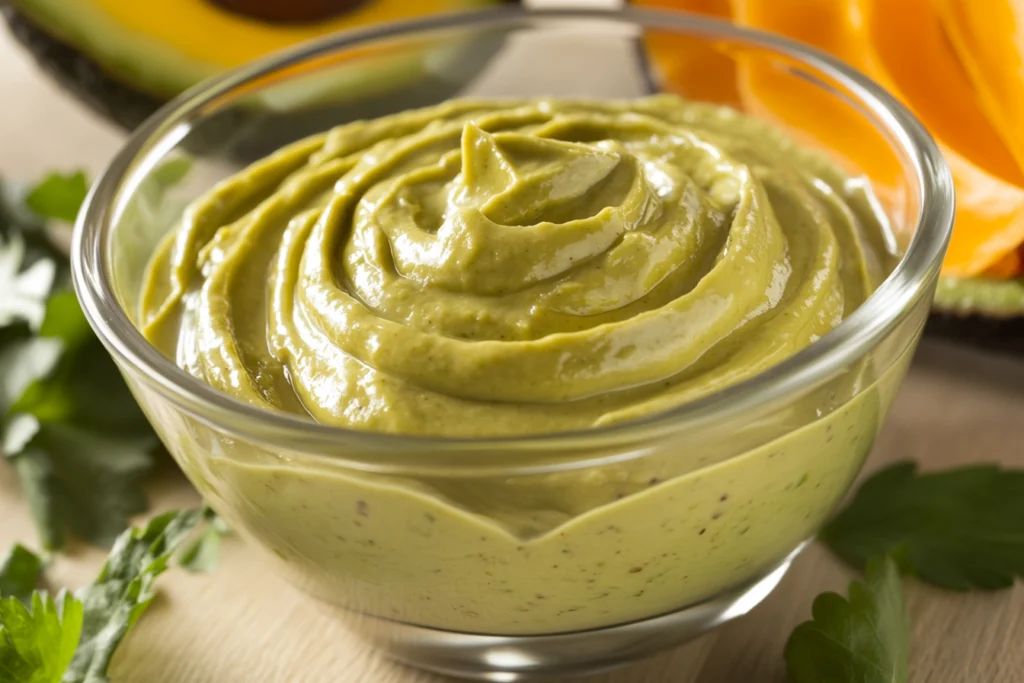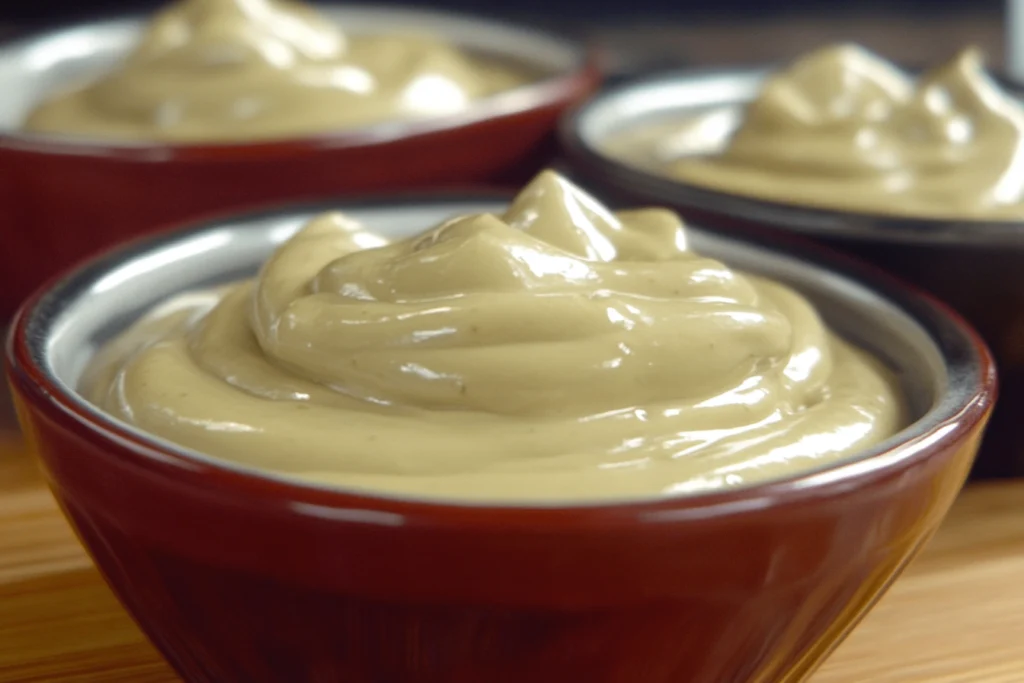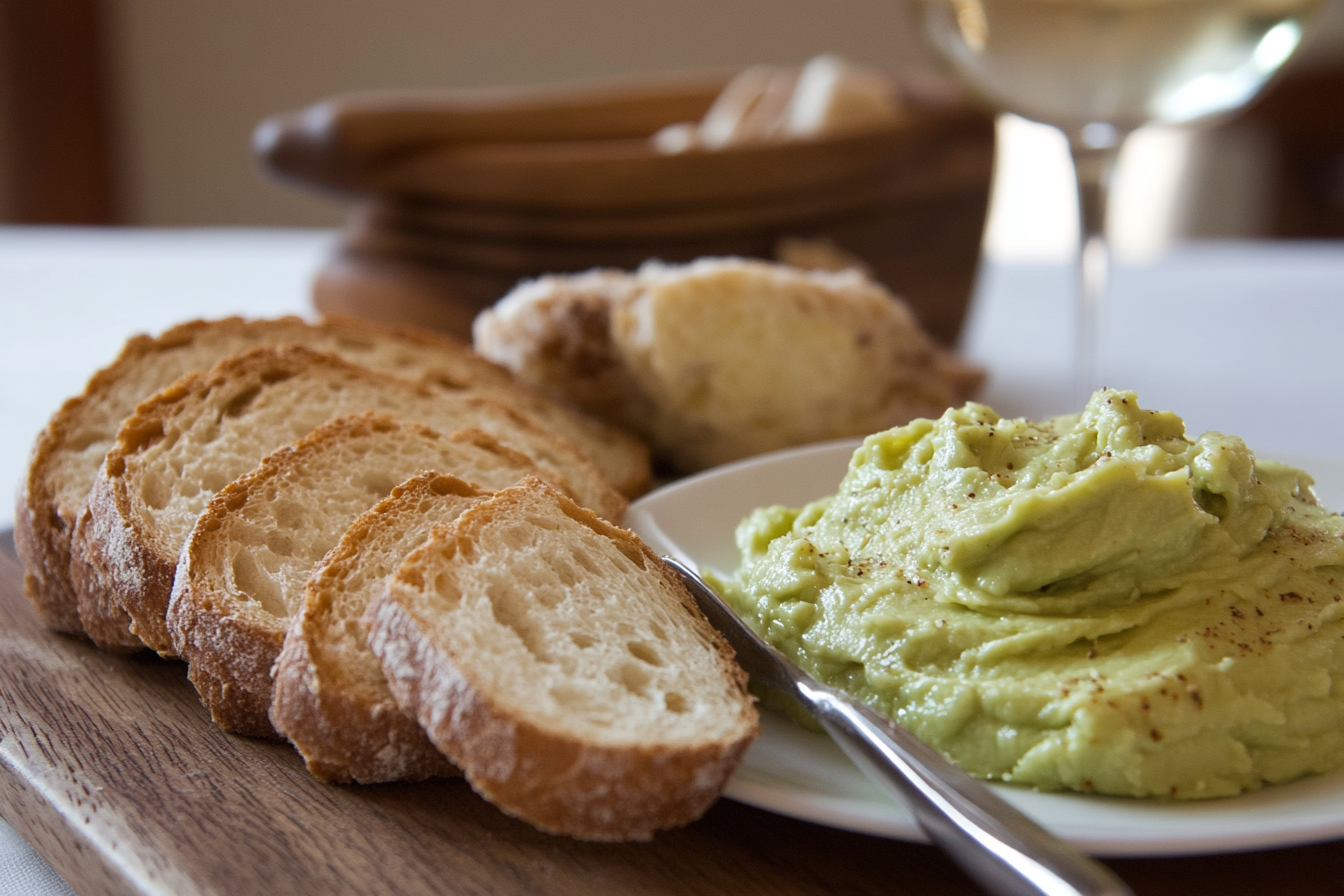The Rise of Avocado Spread in Modern Diets
The avocado spread has become a culinary darling, especially among health-conscious eaters and millennials. Health advocates praise its nutrient-rich profile and creamy texture as a healthier alternative to traditional condiments. From topping toast to filling sandwiches, people have embraced this green delight in kitchens worldwide.
This surge in popularity comes from the growing emphasis on plant-based diets and the trend of incorporating “superfoods” into everyday meals. Avocado delivers monounsaturated fats, fiber, and vitamins, which perfectly align with modern nutritional goals. Many see it not just as a spread but also as a statement of a healthier lifestyle.
A Brief History of Mayonnaise and Its Popularity
In contrast, mayonnaise enjoys a long and storied history. French chefs likely created this creamy mix of eggs, oil, and vinegar centuries ago. For generations, families have relied on mayonnaise as a staple in salads, sandwiches, and dips.
Despite its rich taste, critics often target its high calorie and saturated fat content. However, food manufacturers have introduced low-fat and vegan varieties to meet modern dietary preferences. These adaptations have helped mayonnaise maintain its place on grocery shelves and in kitchens worldwide.
What Are Spreads and Why Are They Essential in Diets?
Spreads enhance meals by adding flavor, texture, and nutritional value. Whether slathered on bread or used as a dip, they elevate the overall dining experience. Beyond taste, spreads like avocado and mayonnaise supply essential nutrients like fats, which the body uses for energy and vitamin absorption.
In recent years, the nutritional focus on spreads has evolved. Consumers increasingly demand options that prioritize health benefits over mere convenience. This shift has intensified debates about whether traditional choices like mayonnaise still hold their ground against newcomers like avocado spread.
Nutritional Trends Driving the Debate
The health movement significantly influences dietary choices today. Buzzwords like “clean eating,” low-carb diets, and heart health dominate food discussions, making nutrient-rich options such as avocado spread stand out. On the other hand, mayonnaise continues to attract fans for its versatility and ability to enhance flavors in a variety of recipes.
Key Similarities Between Avocado Spread and Mayonnaise
Creaminess and Versatility
Both avocado spread and mayonnaise earn praise for their creamy textures. Their smooth consistency makes them perfect for spreading, dipping, and mixing into other ingredients. Their adaptability ensures that cooks can use them in a variety of recipes, ranging from savory snacks to gourmet meals.
Uses in Culinary Applications
Avocado spread shines in modern recipes like avocado toast, guacamole, or as a topping for grain bowls. Meanwhile, mayonnaise remains a classic ingredient in dishes such as potato salad, coleslaw, and sandwiches.
Although these spreads serve different roles in the culinary world, both elevate simple dishes and add a touch of indulgence to everyday meals.
Defining the Contenders: What Are They Made Of?
Ingredients of Avocado Spread
Producers typically make avocado spread by blending ripe avocados with seasonings such as lime juice, salt, and pepper. Some recipes include garlic, herbs, or chili flakes to introduce more complexity to the flavor. These simple ingredients highlight its wholesome, plant-based nature.
Avocado provides several key nutrients:
- Monounsaturated fats: Promote heart health.
- Vitamin E and potassium: Support skin and muscle health.
- Fiber: Improves digestion.
Ingredients of Mayonnaise
Mayonnaise relies on a basic combination of eggs, oil, and an acid (usually vinegar or lemon juice) to create its signature creamy texture. Modern recipes often adjust the proportions or include low-fat and vegan substitutes to cater to a broader audience.
The nutritional profile of mayonnaise depends on the type:
- Traditional mayonnaise: Contains higher levels of calories and saturated fats.
- Low-fat versions: Reduce calorie content but may use added sugars or stabilizers.

Nutritional and Health Comparisons
Nutritional Profiles: A Side-by-Side Comparison
When comparing avocado spread and mayonnaise, understanding their nutritional profiles helps highlight their strengths and weaknesses. Each offers a unique combination of macronutrients and calories, making them suitable for different dietary goals.
Macronutrient Breakdown
Avocado spread provides a nutrient-dense profile. A single serving (2 tablespoons) typically contains:
- Healthy fats: 6–7 grams, primarily monounsaturated.
- Fiber: 2 grams, supporting digestive health.
- Protein: 1 gram, with minimal contribution to daily protein needs.
Mayonnaise, on the other hand, is a fat-dense condiment. A typical serving includes:
- Fats: 10 grams, with a higher percentage of saturated fats.
- Protein: Less than 1 gram.
- Carbohydrates: Negligible, making it suitable for low-carb diets.
While avocado spread offers fiber and beneficial fats, mayonnaise focuses on delivering richness through a fat-heavy composition.
Calorie Content and Density
Avocado spread usually contains 50–80 calories per serving, depending on additional ingredients. Its calorie density makes it suitable for individuals monitoring weight while still needing healthy fats.
Mayonnaise, on the other hand, packs 90–100 calories per serving. Low-fat versions can reduce this to 35–50 calories, but they may include additives that compromise flavor or nutritional value.
These differences make avocado spread an attractive choice for those seeking a lighter, nutrient-rich option.
Health Benefits of Avocado Spread
Rich in Healthy Fats and Nutrients
Avocado spread primarily derives its fats from monounsaturated sources, which research links to improved cardiovascular health. These fats help lower bad cholesterol levels (LDL) while boosting good cholesterol (HDL). Additionally, avocado contributes a variety of nutrients such as:
- Potassium: Reduces blood pressure and supports heart health.
- Vitamin E: Acts as an antioxidant, protecting cells from damage.
These qualities align avocado spread with diets like the Mediterranean diet, which emphasizes whole, nutrient-dense foods.
Heart Health and Cholesterol Reduction
The heart benefits of avocado spread extend beyond its healthy fats. Studies show that consuming avocados regularly may help reduce triglyceride levels and improve overall lipid profiles. The natural fiber content further supports cholesterol management by promoting excretion of LDL cholesterol through the digestive system.
Health Impacts of Mayonnaise
Varieties: Traditional vs. Low-Fat Options
Mayonnaise’s health impact largely depends on the type consumed. Traditional mayonnaise provides a rich, satisfying flavor but contains higher levels of saturated fats. Consuming it in moderation helps prevent excessive calorie intake.
Low-fat mayonnaise offers a reduced-calorie alternative but often includes additives such as:
- Sugar: For compensating lost flavor.
- Preservatives: To maintain texture and shelf life.
While these options lower calorie intake, some health-conscious consumers may prefer to avoid artificial additives.
Cholesterol and Saturated Fats: Are They a Concern?
Traditional mayonnaise, made with eggs and oil, contains cholesterol and saturated fats. Though small amounts can fit into most diets, excessive consumption may contribute to increased LDL cholesterol levels, particularly for individuals with pre-existing heart conditions.
Despite this concern, dietary guidelines now recognize that moderate cholesterol intake from natural sources, such as eggs, may not have the severe impact once believed.
Dietary Preferences and Restrictions
Vegan and Vegetarian Compatibility
Avocado spread naturally accommodates vegan and vegetarian diets. Since it contains no animal products, it easily fits into plant-based eating patterns.
Traditional mayonnaise, by contrast, includes eggs, making it unsuitable for vegans. However, the rise of vegan mayonnaise—which substitutes eggs with plant-based emulsifiers—addresses this concern. This innovation ensures that vegans can still enjoy the rich, creamy texture that mayonnaise offers.
Gluten-Free and Allergen Concerns
Both avocado spread and mayonnaise are generally gluten-free, making them safe for individuals with celiac disease or gluten sensitivity. However, cross-contamination during manufacturing can sometimes occur, so checking labels is essential.
Mayonnaise raises additional allergen concerns due to the presence of eggs. People with egg allergies should opt for egg-free or vegan mayonnaise. Avocado spread, being plant-based, avoids most common allergens and offers a safer choice for sensitive eaters.
Taste, Texture, and Practical Considerations
Taste Profiles: Which One Do People Prefer?
When choosing between avocado spread and mayonnaise, taste often becomes the deciding factor. Each option offers unique strengths, catering to different flavor preferences. While avocado spread provides a fresh and subtle taste, mayonnaise delivers a bold, tangy flavor that complements savory dishes.
The Creamy, Tangy Flavor of Mayonnaise
Mayonnaise delivers a rich, tangy flavor that pairs well with a variety of dishes. Its combination of eggs, oil, and vinegar creates a bold and slightly acidic taste that complements savory foods like sandwiches, burgers, and salads. The tanginess of mayonnaise often appeals to those who enjoy strong, assertive flavors in their meals.
Some variations, such as garlic aioli or spicy mayonnaise, enhance the flavor further, making it a versatile option in both traditional and modern recipes.
The Fresh and Nutty Appeal of Avocado Spread
Avocado spread, in contrast, offers a mild, buttery taste with earthy undertones. The natural creaminess of avocados gives the spread its distinct texture, while added seasonings like lime or garlic can enhance its flavor profile.
The freshness of avocado spread makes it a popular choice for health-conscious eaters who prioritize light, natural flavors. Its subtle taste pairs particularly well with fresh vegetables, whole grains, and lean proteins, making it an ideal choice for plant-forward diets.

Texture and Spreadability
The texture of a spread plays a significant role in its usability across different dishes. While both avocado spread and mayonnaise share a creamy consistency, they have distinct characteristics.
Comparing Usability in Different Recipes
- Avocado Spread: Its thicker consistency can make it less spreadable than mayonnaise, especially if the avocados are not perfectly ripe. However, its thickness works well as a topping or dip, providing a satisfying richness in each bite. Recipes like avocado toast or burrito bowls benefit greatly from this texture.
- Mayonnaise: Mayonnaise’s smooth, uniform texture spreads effortlessly across bread, making it the go-to choice for sandwiches and wraps. Its consistency also makes it an excellent base for salad dressings or dips, where uniformity is key.
Both spreads bring unique advantages to the table, but their texture determines the dishes in which they shine.
Cost and Availability
Regional Availability and Pricing Trends
When it comes to cost, mayonnaise typically wins due to its affordability and widespread availability. Supermarkets globally stock multiple brands and varieties, ranging from traditional to low-fat and vegan options. Its non-perishable nature also contributes to its convenience and lower price point.
Avocado spread, while increasingly popular, remains more expensive and less shelf-stable. Fresh avocados, the main ingredient, often fluctuate in price based on seasonal availability. Regions with limited access to avocados may find pre-made avocado spreads to be even pricier due to transportation and preservation costs.
While avocado spread offers nutritional benefits, mayonnaise stands out as the more budget-friendly and accessible option.
Environmental Impact and Sustainability
Avocado Farming: Water Usage and Ethical Concerns
Despite its health benefits, avocado spread has raised concerns over its environmental impact. Avocado farming requires significant water resources, with one avocado needing approximately 60 gallons of water to grow. In regions like Mexico, where much of the global avocado supply originates, the industry has also faced criticism for deforestation and unsustainable farming practices.
Ethical sourcing of avocados becomes critical for environmentally conscious consumers. Opting for sustainably farmed avocados can help mitigate these concerns, but it may increase costs.
Production of Mayonnaise and Its Carbon Footprint
Mayonnaise production involves ingredients like eggs, which also carry an environmental footprint. Industrial egg farming contributes to greenhouse gas emissions, water consumption, and ethical concerns regarding animal welfare. However, mayonnaise’s longer shelf life and lower production demands make it less resource-intensive than avocado farming.
When comparing the two, avocado spread has a larger water footprint, while mayonnaise contributes more to carbon emissions through its reliance on animal products. Consumers must weigh these factors when making environmentally informed decisions.
Final Verdict: Which Is Better and Why?
Context Matters: Choosing Based on Your Needs
The choice between avocado spread and mayonnaise ultimately depends on personal preferences and dietary goals. Avocado spread excels in nutrient density, plant-based compatibility, and heart health benefits. It is the preferred option for those prioritizing a natural, minimally processed diet.
Mayonnaise, on the other hand, remains unbeatable in versatility, affordability, and convenience. It caters to a broader range of recipes and is widely available in multiple variations to suit different dietary restrictions.
Personal Preferences and Long-Term Impacts
For health-conscious individuals, the long-term benefits of avocado spread—like improved heart health and nutrient intake—may outweigh its higher cost. Meanwhile, mayonnaise serves those who seek flavor and convenience, especially in culinary applications requiring tanginess or creamy texture.
Ultimately, the better choice depends on how you plan to use the spread and what matters most in your diet and lifestyle.
More FAQs
1. Is avocado spread healthier than mayonnaise?
Yes, avocado spread generally contains more nutrients like fiber, potassium, and healthy fats, making it a healthier choice for most diets.
2. Can I substitute avocado spread for mayonnaise in recipes?
You can substitute avocado spread for mayonnaise in recipes like sandwiches and salads, though it may alter the taste and texture.
3. Is mayonnaise bad for heart health?
Traditional mayonnaise contains saturated fats, which may impact heart health if consumed in excess. Low-fat versions or moderation can mitigate these concerns.
4. What are the best uses for avocado spread?
Avocado spread works well as a topping for toast, a filling for wraps, or a base for dips like guacamole.
5. Is vegan mayonnaise healthier than regular mayonnaise?
Vegan mayonnaise typically has fewer calories and no cholesterol, making it a good alternative for health-conscious consumers.
6. Why is avocado spread expensive?
The cost of avocado spread reflects the price of fresh avocados, which depends on seasonal availability and farming practices.
7. Does mayonnaise have any nutritional benefits?
Mayonnaise provides fats necessary for energy, and some versions contain omega-3 fatty acids or added nutrients like vitamin E.
8. Can people with egg allergies eat mayonnaise?
Traditional mayonnaise is not suitable for those with egg allergies, but vegan mayonnaise offers a safe alternative.
9. Does avocado spread need refrigeration?
Yes, avocado spread should be refrigerated to maintain freshness and prevent spoilage.
10. Which spread is better for weight loss?
Avocado spread is better for weight loss due to its lower calorie density and higher fiber content.

